The current bull market turned six years old on Monday, and it seems appropriate to take a look back and see how far stocks have come since the S&P 500 hit a Financial Crisis low of 676.53 on March 9, 2009. The S&P itself has more than tripled in value, up about 207 percent in those six years.
Big American financial institutions were at the center of the crisis. Names like Lehman Brothers, Washington Mutual and Bear Stearns weren’t able to weather the storm, and other big banks only made it through the crisis with the help of the government’s Troubled Assets Relief Program.
Here’s a look at where the “Big Four” American banks stand six years after the market bottomed.
Bank of America Corp BAC 0.12%
Bank of America was one of the names most hobbled during the crisis. From March 9, 2007 to March 9 2009, the bank’s share price fell by more than 92 percent.
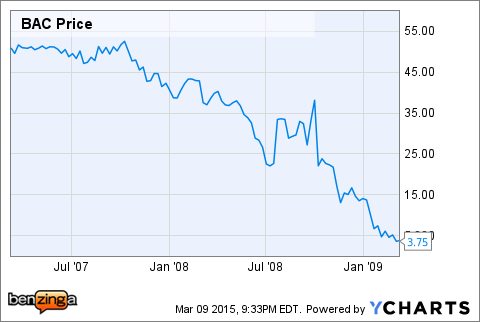
In the six years that have followed, Bank of America has been downsizing and sorting out the mess the company created for itself by acquiring Countrywide Financial and Merrill Lynch during the crisis. From March 9, 2009 to today, Bank of America shares are up more than 320 percent. However, the bank has yet to recover a share price anywhere near its pre-crisis levels.
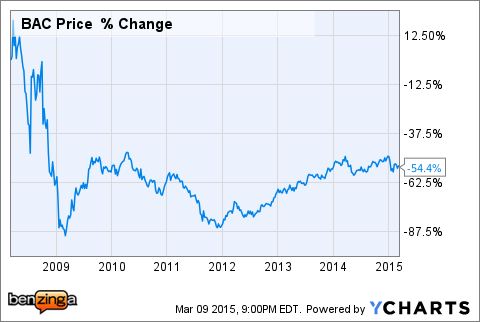
Citigroup Inc C 3.34%
Citigroup was the hardest hit of the Big Four during the crisis. From March 9, 2007 for March 9, 2009, Citigroup’s share price dropped by an incredible 97 percent.

In the six years following the crisis, Citigroup has been selling off assets, downsizing and simplifying its business. Citigroup shares are up more than 400 percent since March 2009. However, they are still down about 90 percent below pre-crisis levels.

JPMorgan Chase & Co. JPM 1.88%
JP Morgan stood relatively tall during the crisis and acquired assets from both Washington Mutual and Bear Stearns. Since March 2009, JP Morgan shares are up more than 285 percent.
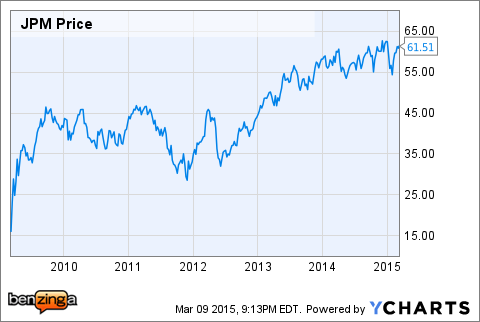
However, unlike the big losses endured by Citigroup and Bank of America shareholders, JP Morgan’s shareholders have actually turned a profit overall since March 2007.
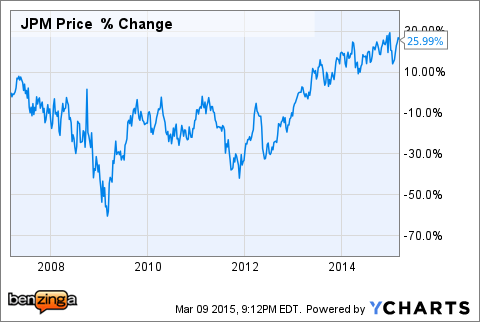
Wells Fargo & Co WFC 3.52%
Wells Fargo shares are up more than 448 percent since March of 2009. The company’s avoidance of the risky practices that led to the downfall of other financial institutions during the crisis put Wells Fargo in a position to acquire assets and grow its balance sheet in the years that followed.
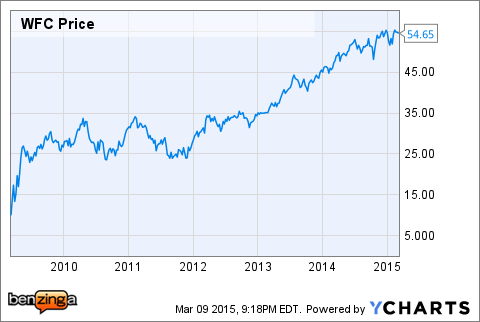
Overall, Wells Fargo has performed the best of the Big Four since prior to the Financial Crisis. Since March 2007, the stock is up more than 58 percent.

Big Week For Banks
This week is an important week for big American banks. The results of the Federal Reserve’s capital plan reviews were released on Wednesday. All of the Big Four’s capital plans were accepted by the Federal reserve, although Bank of America must provide further information and re-submit its plan.
Read this article and all my other articles for free on Benzinga by clicking here
Want to learn more about the stock market? Or maybe you just want to be able to look sophisticated in front of your coworkers when they ask you what you are reading on your Kindle, and you’d prefer to tell them “Oh, I’m just reading a book about stock market analysis,” rather than the usual “Oh, I’m just looking at pics of my ex-girlfriend on Facebook.” For these reasons and more, check out my book, Beating Wall Street with Common Sense. I don’t have a degree in finance; I have a degree in neuroscience. You don’t have to predict what stocks will do if you can predict what traders will do and be one step ahead of them. I made a 400% return in the stock market over five years using only basic principles of psychology and common sense. Beating Wall Street with Common Sense is now available on Amazon, and tradingcommonsense.com is always available on your local internet!


